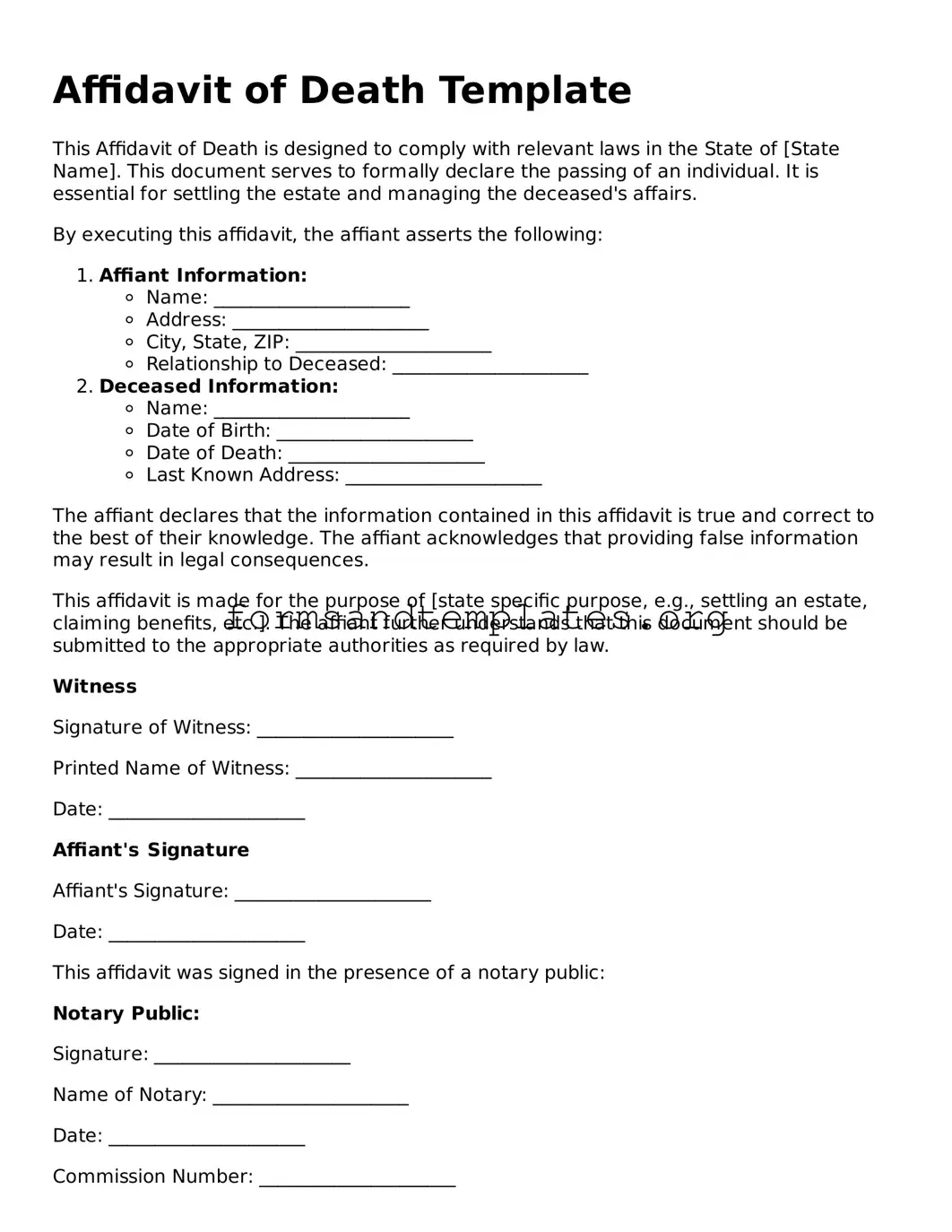Affidavit of Death Template
This Affidavit of Death is designed to comply with relevant laws in the State of [State Name]. This document serves to formally declare the passing of an individual. It is essential for settling the estate and managing the deceased's affairs.
By executing this affidavit, the affiant asserts the following:
- Affiant Information:
- Name: _____________________
- Address: _____________________
- City, State, ZIP: _____________________
- Relationship to Deceased: _____________________
- Deceased Information:
- Name: _____________________
- Date of Birth: _____________________
- Date of Death: _____________________
- Last Known Address: _____________________
The affiant declares that the information contained in this affidavit is true and correct to the best of their knowledge. The affiant acknowledges that providing false information may result in legal consequences.
This affidavit is made for the purpose of [state specific purpose, e.g., settling an estate, claiming benefits, etc.]. The affiant further understands that this document should be submitted to the appropriate authorities as required by law.
Witness
Signature of Witness: _____________________
Printed Name of Witness: _____________________
Date: _____________________
Affiant's Signature
Affiant's Signature: _____________________
Date: _____________________
This affidavit was signed in the presence of a notary public:
Notary Public:
Signature: _____________________
Name of Notary: _____________________
Date: _____________________
Commission Number: _____________________
My Commission Expires: _____________________
